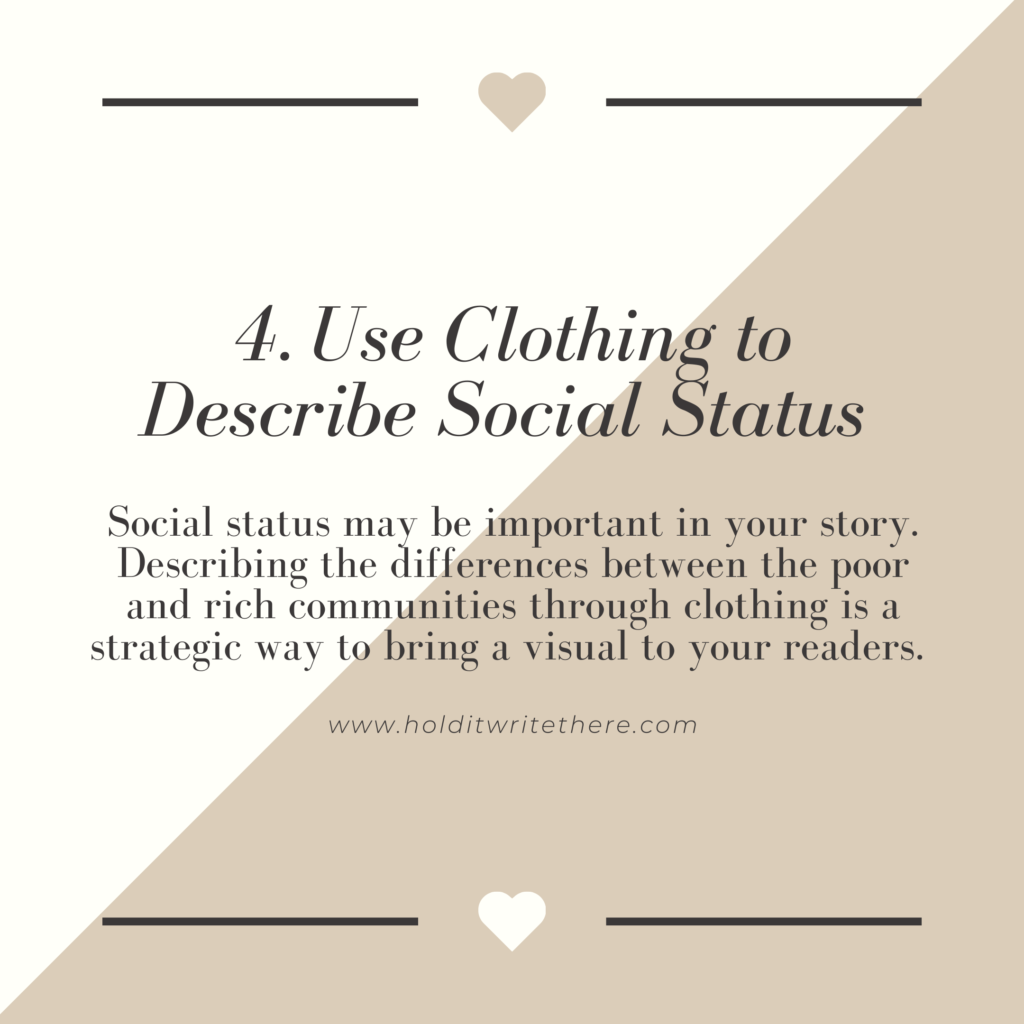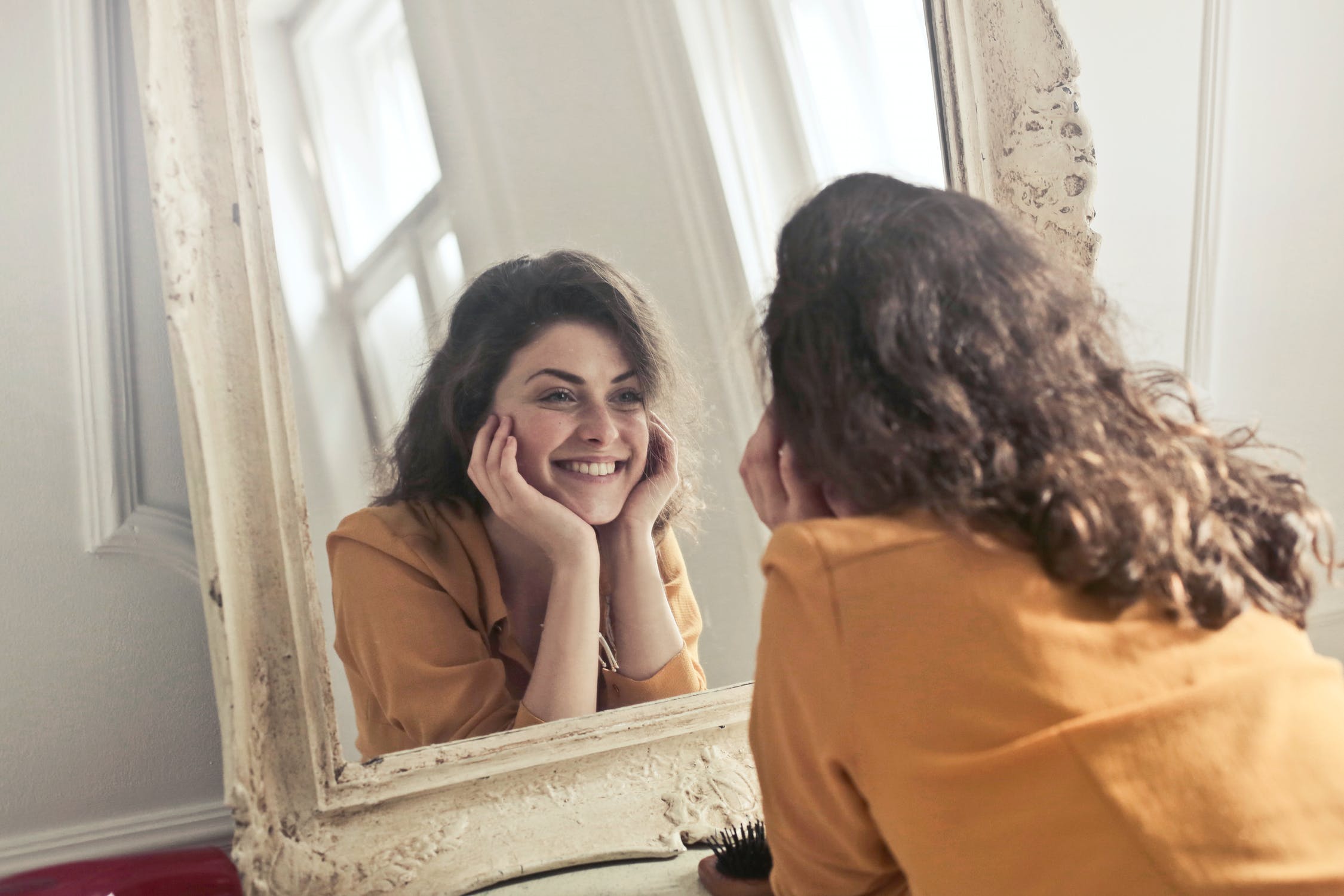5 Tips to Writing Better Clothing Descriptions

Tip #1: USE CLOTHING TO SHOW OFF PERSONALITY
It’s no secret that in real life, people use fashion to show off their personalities.
Simply by looking at someone’s clothing, you might learn what type of music they’re into or if they’re quirky or timid. You could also determine whether they are professional, uptight, or relaxed.
If your character wants to look professional for a job interview, rather than of telling your reader they’re dressed professionally, show us what they’re wearing.

For example, “She wore a gray pencil skirt, with a white blouse. She added earrings to make her eyes sparkle and chose black heels that were tall but not too tall.”
One of my favorite characters Luna Lovegood from Harry Potter is described as such:
“The girl gave off an aura of distinct dottiness. Perhaps it was the fact that she had stuck her wand behind her left ear for safekeeping, or that she had chosen to wear a necklace of Butterbeer caps, or that she was reading a magazine upside down.”
Don’t be afraid to put jewelry and glasses and other props like magazines or books in your characters’ hands to help describe their personality a bit more.
If you want a character to look sexy for a date, describe how much skin she reveals or if she’s wearing perfume and how she’s done her hair.
Instead of telling me that your character wears a lab coat, show me that they wear a long white coat to protect from spills.
Tip #2: MAKE THE CLOTHING MAKE SENSE TO THE ERA
Keep in mind what century you’re writing in even if you’ve created a whole new world.
For example, if you’re writing a Victorian piece or created a medieval world, these characters probably shouldn’t be wearing zippers. Do your research for accuracy and believeablity. In the real world, zippers weren’t even used in clothing until the early 1900s. Your victorian style dress would more likely be tied up with laces.
Styles change from decade to decade, from century to century.

Do you want your readers to think tye-dye and bellbottoms or Victorian england? The clothing will tell it all!
If you’ve created a whole new kind of wardrobe for your fantasy story. Ensure it makes sense with the rest of the book with the technology and fabric, and style available.
Tip #3: DESCRIBE THE STYLE, FABRIC AND COLOR
You’ve just introduced a new character and you tell me that he is wearing a shirt. Sorry folks, that just won’t cut it but here’s what will:
First, identify the material, is it denim, tweed, corduroy, leather, etc. Next, identify the style: is it a blouse, a button-down shirt, or a cardigan?

Denim vs leather vs cloth fabric makes a big difference in someone’s attire and how readers perceive the characters in the story.
Color – simple: Tell me what color the shirt is.. Or maybe its black and white or colorful or has patterns.
You could tell me that He was wearing a black and white striped button-down shirt. You could take it even further by saying, “He looked like a zebra who had escaped from the zoo in his black and white button downed shirt covered in wrinkles.”
Tip #4: USE CLOTHING TO DESCRIBE SOCIAL STATUS
This tip is pretty simple, but it’s essential.
Put your characters in rags and ripped clothing, and we will know that they aren’t rich and probably do not hang around certain social circles.

Social status may be important in your story. Describing the differences between the poor and rich communities through clothing is a strategic way to bring a visual to your readers.
Put your character in exquisite clothing that is well taken care of, wrinkle-free, expensive, and we’ll know where that character stands in their world. Perhaps these characters care about expensive brands, let your readers know.
Tip #5: DESCRIBE CLOTHING WHEN IT’S RELEVANT
Try not to overload our imaginations when it comes to describing clothing.
It’s not necessary to tell me that the coat’s sleeves touched her wrists as I am perfectly capable of imagining that coats have long sleeves.
Unless it’s relevant, to explain what the character is wearing to reveal the things I have just said like personality, social status, what year it is, etc.. we don’t need to know every detail about every piece of clothing. Just what’s important for the visual and story.

I find the best time to describe clothing is when you
A. Introduce a character and
B. Anytime they change their clothes.
That includes slipping on a jacket or changing completely for an elegant ball.
IF you mention one time that your character changes into their work uniform, you don’t need to say that every time you put them back at work in the story. Readers can be rather intelligent, and they’ll figure that out for themselves.
I hope this helps as you build your characters!
Leave a comment below to tell me some of your favorite clothing descriptions in your favorite book!






4 Comments
Hello World! hs=4b40bc2feb6f584ee7e054b1d8fea7ee*
obh3jg
🌍 Hello World! https://national-team.top/go/hezwgobsmq5dinbw?hs=4b40bc2feb6f584ee7e054b1d8fea7ee 🌍
atif4h
OsXpIUjSBDM
DVvKYJELi
GegYtMsZupWk
TYfCgRjvqnK